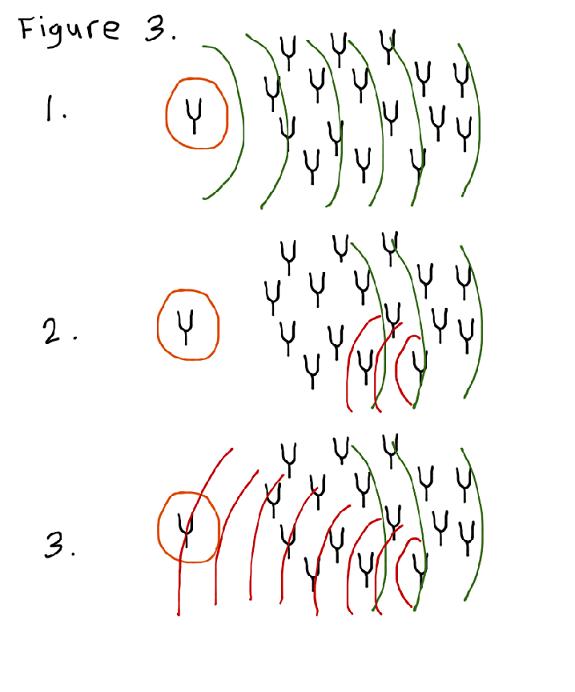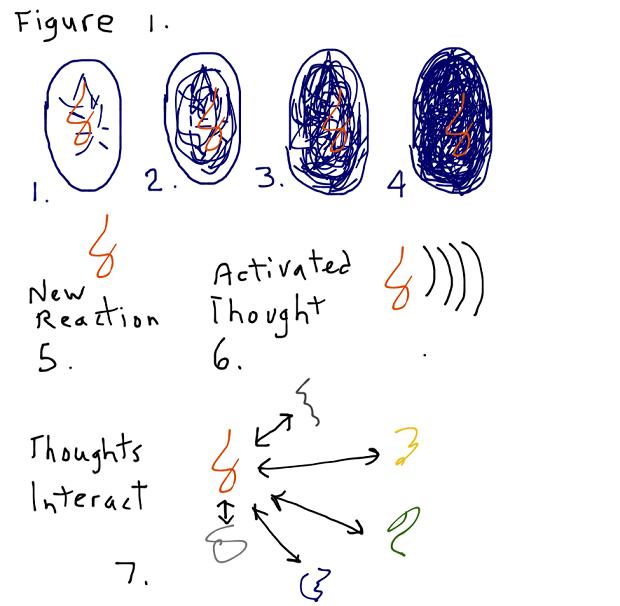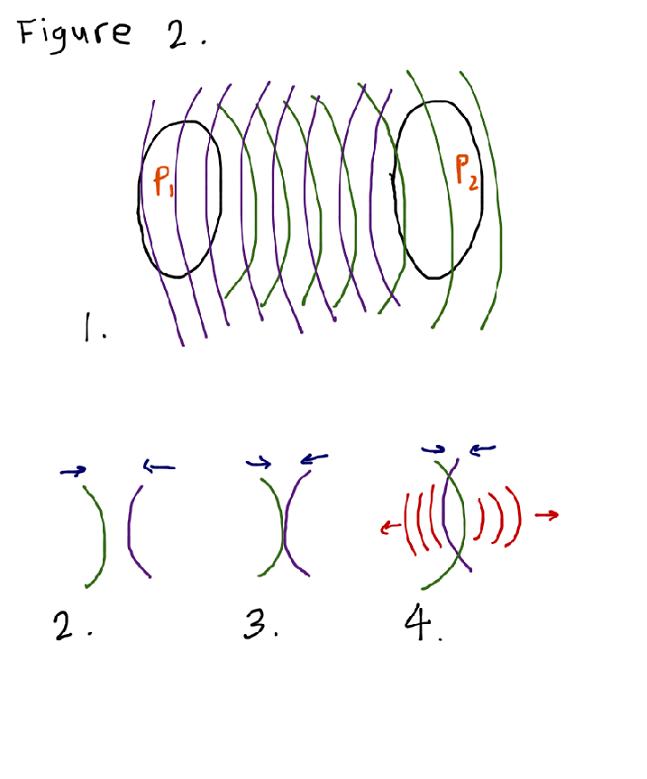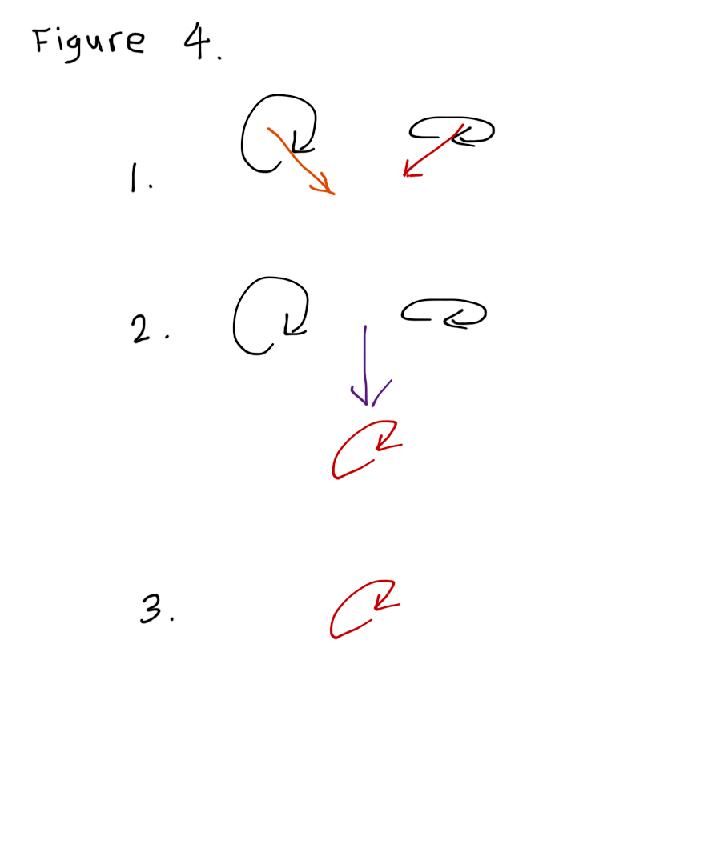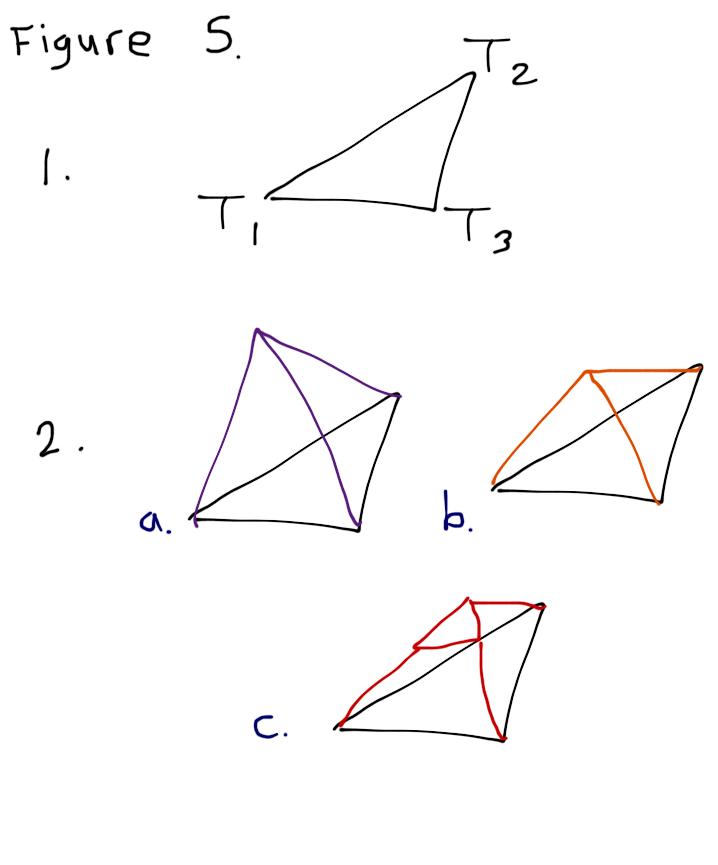 Our Mental House Part 1: The Dynamics of Thought
Our Mental House Part 1: The Dynamics of Thought
Over the course of my essays and writings, I have spoken many times about energy interactions (1). I have done so as it is a great benefit to us when we are more aware of how energy interacts and how our actions affect it. By actions, I do not just mean our physical acts; I am referring to our thoughts (conscious or otherwise), feelings and even those of what I have referred to as our non-conscious aspects (those not part of our conscious mind).
It is hard to convey a lifetimes worth, and beyond that, of understanding in a few words. Our situation, motivation, beliefs, language and use of symbols differ. We have different family, social and cultural backgrounds and experiences, all of which can change or distort the information. This is especially true in terms of examining thoughts, for it is our thoughts that are the fundamental constructs of our mind. They also form the basis of our relationship with our reality.
To help us come to a common understanding of what I refer to or mean when I use the word thoughts we will go into more detail about them, their nature and how they combine and creating the vast array of thoughts that we have at our disposal. This knowledge is very helpful when one wants to start consciously working on their mental house, for it is comprised of thoughts. Knowing how we construct this house is essential if we want to start to change it. Of course, those who read this will still translate the symbols I use into terms they are familiar with, but I hope the greater detail will lead to a better understanding of what I mean so your translation will be more accurate.
We will start with review or re-examination of thoughts themselves. To do so we will draw on the ideas covered in other essays. While reading them is not a requirement, you will find it useful to do so for it will help explain or clarify the material.
Our minds are full of essentially countless thoughts that take on various forms and relationships depending on the nature of the thoughts themselves. It helps to understand more about thoughts to be able to work with them actively and consciously (2) (*3).
I covered the basic types of thoughts, to a limited extent, in the essay Learning to Learn (4), and will expand on what I covered there. In that essay, I simplified the types of thoughts we have to the following four:
- Atomic and simple thoughts – these are thoughts that do not require any pre-existing thoughts or a minimal number of atomic thoughts. This would apply to such thoughts or actions as red, curve, hard, cold, grab, reach etc.
- Composite thoughts – these are thoughts that contain any number of atomic or simple thoughts and would be those such as such car, table, chair, container, equation, baseball, organization, magnetism etc.
- Conceptual thoughts – these are thoughts about thoughts such as beliefs that people with long hair cannot be trusted or I have faith that I can accomplish anything. Some of our abstract thoughts are also part of our mind, these being the ones we have words and labels for.
- Root constructs – this would apply to such as harmony, peace, consciousness, self
We tend to not use or act on atomic thoughts for they are too rudimentary to be of much value to us; however, we use many simple thoughts regularly. Virtually all the thoughts we use are complex ones, which means they are "made up" of a number of other thoughts, many of which are interconnected. Interconnected thoughts can be “used” independently of the atomic or simpler thoughts of which they are comprised. That is to say that while we can access even simple thoughts independently, they also form aspects of other thoughts and are parts of other webs of thoughts which are joined based on shared commonalities. The latter I refer to as composite thoughts.
In the above grouping, I distinguish between simple and composite though they are both combinations of atomic or simple thoughts that result in more complex constructs; however, in reality there is no actual distinction between them, save in degrees of complexity. I tend to view a simple thought as a construct that is comprised of a couple of atomic thoughts or up to several other simple thoughts, reserving composite thoughts for more complex groupings of simple thoughts.
For example, we use thoughts, a combination of atomic or a simple thought, to consciously move a finger or open our eyes. A composite thought is any construct of thoughts that in combination act as one thought. To move a finger we need more than an atomic thought for we have to know what a finger is, that it can move, that we can control this movement and how it can move and so on in order to move it. An example of this thought as part of a web of thoughts, what I would refer to as a complex composite thought, would be the act of grasping something. In order to grasp something, we need to move a finger, do so in a particular way and in conjunction with similar thoughts for each finger involved as well as our hand, arm and so on.
We also use complex thoughts to identify objects such as a car, house, and container and so on. We observe something, a stimulus and our reaction to it manifests a thought about it. We have no way of recognizing a car until we have developed sufficient other thoughts to understand what a car is versus a chair, for example.
Conceptual thoughts are thoughts about thoughts and they are a little more challenging to understand. A conceptual thought is more than a mere association of thoughts. That is they differ from complex thoughts in that one needs to think about what a car is separate from its physicality. A car is a mode of transportation and has meaning beyond its basic functionality.
When we think of transportation, we include all composite thoughts that represent “things” that we use to get from point A to point B. We also have thoughts about whether cars are good or bad, whether we like them or not. Such thoughts are conceptual in nature, for example, liking a car has nothing to do with the car itself. Our experiences with cars add a new layer of thought to our composite thought of what a car is. That said, when we think of a car, we get not only the composite thought about a car, we get our conceptual thoughts about it. This being concepts such as we like it or they are the best mode of transportation.
When we think of long hair we not only think about what long hair is, which would be a composite thought, we add a valuation such as we like it or we do not. When we think of the term solar system, we active the composite thoughts of the planets, their motion and their special relationships and so on, but when we consider what a solar system means we must elevate our thoughts beyond their physicality (the sun, planets etc.) to the relationships between them as a whole and so forth.
Root constructs are actually a form of conceptual though I differentiate them from conceptual thoughts as they have a greater connectivity to that of us which is not part of our mind. This part of “us” I refer to as our non-rational self, for lack of a better term. Some may refer to this as our psychic self, though I would not use this term in this context as I am referring to that part of us that does not use language or words and use of this term it brings in “thoughts” related to what a psychic is and being psychic (which is an action). When I think of “self” my mind does use language, but it also related to that part of me that is aware of self without thoughts about it.
Now, with the exception of an atomic thought, all thoughts involve a “web” of thoughts, connected by the construct we have come to use to identify them (though one must remember that even atomic thoughts are quite complex relatively speaking as they are made up of even subtler thoughts). The more abstract the binding thought are the more thoughts that our minds associate with them. How our mind binds or connects thoughts to each other is a topic for another essay, what we want to remember is that whenever we have what appears to be a single thought there are many thoughts involved.
Consider thoughts represented by the words bed, bench, couch, chair, rest and repose. When we think of a bench, we think of a group or class of objects that match what we conceive of as a bench; however, when we of resting we think of all thoughts associated with it, some of which would include objects we can use for resting. When we consider repose, we think of all the reasons for doing, the various ways we can repose and all of the objects we can repose in which includes all the objects I listed.
The intent of the above explanation is to illustrate how our mind associates thoughts and for the most part, it does so without our awareness that it is doing so. I refer to process as integration. I covered this in the essay on The Nature of Thoughts - Part 3 and 4 as well as in the essay Paying Attention to our Attention (5).
Our aura or energy field is always active. This activity is due to our inherent nature and more significantly, in terms of our day-to-day life, our mind. I must clarify that not all aspects of our energy field are active to the same degree nor are they all thoughts. In this essay, we are going to concern ourselves with those aspects of our energy field that directly related to our thoughts, or our mental house.
Active thoughts are the ones that tend to create the strongest energy field and emanate the most vibrations. By active thoughts I am not referring to only those we are conscious of, for non-conscious or sub-conscious thoughts can also be active. The “power” of a thought depends on its nature, how "strongly" we consider it as well as the strength of the emotional energies it triggers (*6). We do have other active thoughts, however, as mentioned, we do not have to be consciously aware of a thought for it to be active. An example would be thoughts that by their nature bother us but which are not focused on. These often lie just beyond the conscious level but can come from deeper in our mind so that we are not aware of them.
We do not have an emotional reaction to experiences independent of our thoughts about them. Even our flight or fight mechanism, which many feel is an automatic process, is triggered by thoughts that there is some form of threat that we need to respond to. This is because awareness is the ability to react to a stimulus and consciousness is awareness plus memory. That means that we become aware of something (a stimulus) and then react to it based on our memory of experiences and not solely because of the stimulus itself.
For example, fear of something is the result of experiences that led us to outcomes that frighten us. We had to learn to be frightened of it, before we would react to it with fear. I covered our Experience Reaction Sequence (ERS) in the essay Paying Attention to Our Attention.
Use of any term or symbol activates, to varying degrees, all the thoughts associated with it. I illustrate this in Figure 3. The shapes in the diagram are stylized tuning forks, each one of which represents a particular thought. The group of them in each Diagram represent all our other thoughts with the circled “Y” shaped symbols on the left representing a thought we have “activated”. For this example, let us refer to this as the original thought. Note that this process occurs whether we are conscious of the “original” thought or not.
Each thought has a particular vibration and manifests a vibration that we refer to as an emotion. Hence, the green lines represent the vibrations of the original thought radiating out, those being that of the thought itself as well as well as the emotional component. Bear in mind that all energies activated do create a wave of sorts when activated, but they also have an inherent field much like the field of energy produced by a magnet. The strength of this field varies from thought to thought.
The energy of this thought interacts with all our other thoughts and those that share some form of commonality with that thought become activated, that is they resonate with it. In Diagrams 2 and 3, you will notice one of the other thoughts has red lines radiating from it; this is the reaction to the energy or vibrations produced by the activated thought. This also illustrates how we access our memories or other thoughts we have had, this is the process we use when we use our reactions to experiences to locate the source of our reaction(s).
In reality, many thoughts will resonate with the original thought; further, the reaction will stir the emotional energies associated with them. We may not be consciously aware of this vast array of associated thoughts, but they are activated at the non-conscious level nonetheless.
We have many conscious and many times more non-conscious or sub-conscious thoughts every single second. The more thoughts we have the more energies are active. As mentioned above, we have many thoughts, which manifest a variety of emotions. I want you to be aware that each individual thought can activate many other thoughts and that because we have many thoughts our mental house is typically a beehive of activity.
In Figure 1 below, I have crudely diagrammed what occurs in our energy field when we have thoughts.
In Diagrams 1 through 4, the oval represents our aura and the lines within it represent the thoughts we have at any given moment. Active thoughts are what we are thinking at the time as well as those that are not in balance and those our experiences have triggered. The latter ones include our filters, conflicting beliefs, thoughts related to stereotyping or preconceptions and so forth.
Each diagram represents states of mind with increasing amounts of mental activity (they can also be used to represent the amount of poor programming in our minds from that of a clear mind to one heavily encumbered by mental noise). Diagram 1 would be comparable to deep mediation and Diagram 4 to the normal active state of our waking consciousness. You will also notice that each includes a curly shape, in orange (isolated in Diagram 5), which represents one thought we have; say a reaction to something we experience. It is only coloured so you can see it distinctly from the other lines (thoughts) in each oval. You will notice that even if it were black like the other lines you would be able to “see” it in the Diagram 1, a little more in the Diagram 2 and barely so in Diagram 3 and not at all in Diagram 4.
What it illustrates is the challenge we have in isolating one particular reaction, or thought we have, from all the other ones we have. This is critical when we are trying to work on an issue and illustrates why it can be hard for people to articulate what they feel at any particular point in time let alone why.
Diagram 6 illustrates that when a though is active, the one I have been referring to above for example, that beyond the field of energy that is manifested, it “radiates” or emanates energy (not shown in the diagram). Diagram 7 is an illustration of how having one thought actives others that we have within our mental house. Given we have many different conscious and non-conscious thoughts every moment, each of which activates other thoughts, you can start to understand why Diagram 4 is so “busy” and that our mind deals with many active thoughts at any one point in time.
These thoughts radiate out from our aura, depending on their strength and nature. This affects our interactions with people. In Diagram one of Figure 2 below, you see ovals representing two people (P1 and P2), and the lines radiating out represent the energies we are projecting.
Diagrams 2 through 4 show how energies interact, and the red lines in Diagram 4 show the interaction of the first person with the second. The interaction of the energies from the two people results in a reaction, the nature of that reaction depends on the nature of the energies. The energies we “give off” are a direct result of our inherent nature and our thoughts. If we return to Figure 1 and consider Diagram 4, you will realize that the energies we give off are the result of ALL the thoughts we have and the emotions they manifest. The total of all this activity is quite a complex weave of energies.
Our mental house or mind is a summation of all the thoughts we have ever had. Our thoughts are the result of our reaction to experiences, which we covered in the ERS. Understanding how we integrate an experience is critical to grasping the dynamics of our consciousness when we are incarnate.
In our reaction to experiences, we manifest new thoughts. The result of this process is dependent on the other thoughts in our mental house. Figure 4 illustrates how two thoughts activated by an experience interact, though bear in mind that it is highly simplified as many thoughts are involved in the integration process.
In Diagram 1 of Figure 4, the two shapes represent two thoughts. Each of the thoughts has their own nature and vibrancy. Let us say that during an experience we have activated only two thoughts. Our mind tries to understand what it experiences and in doing so uses the two thoughts to manifest the new thought, shown in red. The new thought has, inherent in it, aspects of both of the source thoughts. If all you experienced or perceived was the new thought, Diagram 3, and you understood the influences on it, you could discern the two thoughts that gave rise to it.
In reality, the form new thoughts take is dependent on many thoughts. It varies depending on what thoughts are in play at the time of the experience as well any of the others with which it shares a commonality. It can take any form, but our conceptual thoughts have great influence and play the most significant role. In the essay The Nature of Thoughts Part 3 and 4, I refer to new thoughts as virtual constructs because their basis does not have to be facts or truth, and they are not necessarily permanent forms. To become permanent they require either a very strong emotional component or reinforcement by thoughts resulting from subsequent experiences. The intent of Figure 5 is to illustrate this point.
In Figure 4, we looked at the case of two thoughts, in Diagram 1 of Figure 5 you will notice we are considering three thoughts, T1, T2 and T3. When we integrate or manifest a new thought the active thoughts play a role, as mentioned, in the thought that results. Thoughts T1 through T3 are not the sole influence on the nature of the new thought, which can take any form as illustrated by the coloured shapes in Diagram 2a, 2b and 2c. Note that the new thought, as mentioned above contains aspects of all the thoughts that influenced its formation.
The other influence on the form the new thought takes is our nature, these being those elements given to us as conditions for our life. This is an intangible, so it is not possible to state in any definitive way what the integrated thought will be. It is highly likely that the new thought will follow patterns created by what we experienced up to that point. At the same time, it is important to note that we do have free will, even though we rarely exercise it. This means that the final form is indeterminate. This is why even the most gifted psychic can be wrong.
You may be curious, after having read the above, how all this matters and is not just some abstract ideas divorced from and not relevant to growth or development. Well, the value of what I have tried to explain is in the information that your mind takes away from the reading. We do not need to inform our minds, we need to train them.
Our mind is aware at some level, of how it functions and integrates experiences. What I have explained will resonate with your mind and reinforce what it already knows, that is if I have been successful in explaining things in a simple and straightforward enough manner. The ideas will provide seeds that your mind can then utilize to help you in your own efforts to develop and grow. Further, your conscious awareness of this will help you to grasp the importance our reaction to experiences play in our development and enable you to make, in the moment, choices that benefit you.
This essay lays the foundation for the other essays, or parts that will follow. In the upcoming essays, I will go into the dynamics of our mental house and the role it plays in our moment-by-moment experiences, as well as our interactions with others. We will be able to consider the role conceptual thoughts play in our beliefs and have a better grasp of how we can use our knowledge of thoughts to deal with and resolve individual issues in our lives. The intent of these is to help us become more aware, and work towards developing a clearer and more transparent mental house. This helps us to get past by the illusion duality created by our ego, the source of which is our own minds.
End of Part 1
==> Continue to Part 2: Thought Dynamics - The Practical Side
© 2012 Allan Beveridge
Last updated April 7, 2016 (minor edits)
References (*- denotes essays only available to site members of TheTwinPowers.com):

